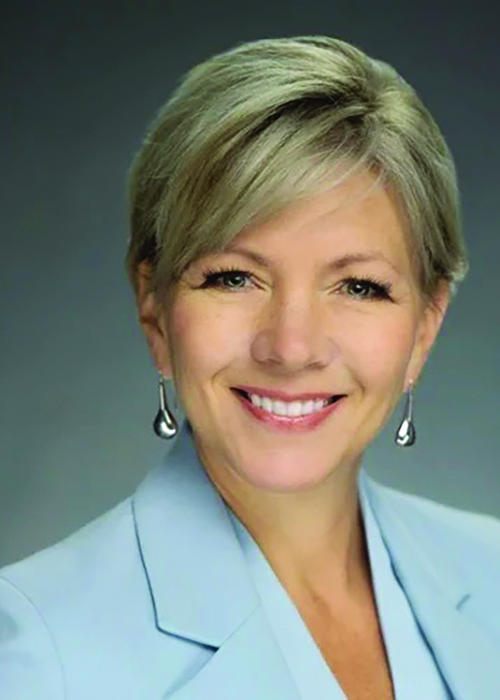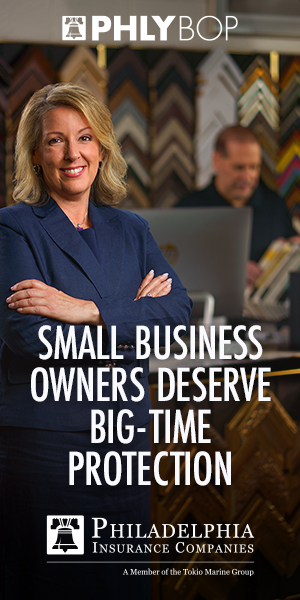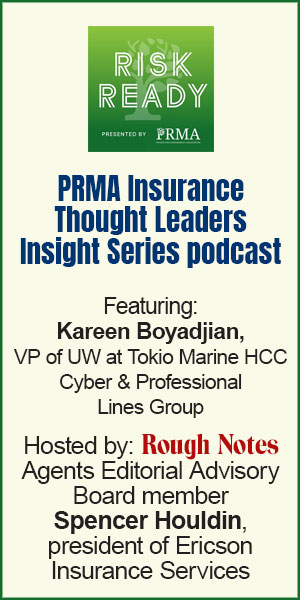A look inside one insurance advisory
firm’s strategic shift to a flexible marketing model
By Lanie Raphael
Insurance advisory firms are continually challenged with how to set themselves apart within the industry while staying client-focused, producing personalized service, and offering real value.
At B. F. Saul Insurance, we found ourselves at that very intersection. We had a clear market identity, strong growth goals, and a strong leadership team. What we lacked was an internal marketing engine that could support our business development efforts and allow us to scale up.
Rather than staffing our marketing department with full-time hires, we adopted a fractional marketing model. The results have been transformative—from how we approach growth strategy to how we generate leads, track performance, and align internal teams.
The move gave us clarity in an area that had often felt scattered and uncertain. We had a real sense of direction and the traction to move forward with purpose. We’ve learned much along our journey—lessons that I believe will resonate with other independent firms facing similar challenges.
Why we considered fractional marketing
Similar to many growing agencies, we were doing the best we could with what we had. Everyone was pitching in to keep marketing moving. We had a talented marketing manager handling the day-to-day, but they didn’t have anyone to bounce ideas off of or provide any strategic oversight. They were doing it all, serving as the “lonely marketer.”
And while we got things out the door, it often felt reactive. Messaging was inconsistent, deadlines snuck up on us, and there wasn’t a clear strategy tying it all together. It wasn’t a sustainable way to work.
We weren’t ready to build a full in-house marketing team, but we knew we needed more structure—and someone who could offer high-level strategy and could support our marketing manager. That’s what made the fractional model such a great fit. It gave us access to experienced marketing leadership and extra hands when we needed them, while also taking the stress off the hiring of a full team.
It also gave us a much needed outside perspective. A fractional marketing team could take a clear, unbiased look at where we were—to ask the right questions, challenge what may not be working, and develop a strategy to produce meaningful growth.
Laying the groundwork
The first step was getting everyone aligned. Our fractional team conducted a thorough due diligence process, interviewing management and customers, evaluating competitors, and analyzing our website and social media performance, to fully understand our business, identify areas of strength, and pinpoint where we needed more support. They then developed a go-to market plan that defined the overall goals, a comprehensive, multi-channel strategy, and the tactics it would take to get there.
From there, we were able to clearly articulate what made us different, what audiences we should prioritize, and how to show up in the market with a more meaningful impact.
Once that was set in stone, we were able to dive into execution. We held a brand workshop to define voice and tone, and we refreshed our website with new messaging and branding. Then, we were able to start launching targeted campaigns, creating content with a consistent brand voice, building out a stronger email strategy, and tightening up our digital presence.
We weren’t ready to build a full in-house
marketing team, but we knew we needed more
structure—and someone who could offer
high-level strategy and could support our
marketing manager.
This structure didn’t just enhance our external visibility—it brought internal clarity. Producers could focus on client relationships. Leadership could focus on strategic priorities. And our marketing partner kept everyone aligned and accountable to quarterly goals. They also provided mentorship, guidance, and a sense of camaraderie for our marketing manager. They finally had the strategic support and collaboration they had been missing.
We had regular check-ins—not just to review tasks, but to pause and ask, “Is this still working? Are we headed in the right direction?” Those conversations helped everyone feel more invested in the process. It wasn’t about tracking to-do lists—it was about building shared accountability and making sure our efforts stayed aligned with our goals.
Measurable gains and lessons learned
As a result of our efforts, we saw stronger engagement from prospects, more inbound inquiries, and better alignment between marketing and sales. Our content performed better. Website traffic increased, particularly from organic search. And we gained traction in markets we had previously struggled to reach.
By the end of 2024, our total keyword rankings increased by 192%, organic search sessions rose by 104%, and we generated 89% more leads and 291% more marketing qualified leads (MQLs). We were finally gaining traction in areas that had previously felt out of reach.
But perhaps what was more important, we built a marketing foundation that could scale with us—a repeatable system with process, ownership, and strategic intent. Many agencies overlook this aspect of growth but, in our case, it was a critical investment.
It gave us more than just quick wins. It gave us a strategic roadmap. Now, when we pursue new ideas or go after new markets, we’re not reinventing the wheel. We have a foundation that supports what we’re building.
Expert perspective: Common pitfalls, big payoffs
According to Debra Andrews, founder of the fractional marketing firm we partnered with, our challenges were common. “Independent agencies often come to us with great leadership and market vision, but their marketing efforts are fragmented,” she says. “They’ve been taking a piecemeal, reactive approach to marketing. Our job is to introduce structure, consistency, and a data-driven approach.”
She’s quick to point out that fractional doesn’t mean “less than.” In fact, she argues, it can be more effective than a single in-house hire. “You get cross-functional expertise, broader industry insight, and a team that’s built to deliver both strategy and execution.”
“It’s not about doing everything at once,” she adds. “It’s about creating focus and building a rhythm. When agencies see the early momentum, it builds trust in the process, and that’s when the real impact starts.”
As a result of our efforts,
we saw stronger engagement
from prospects, more inbound
inquiries, and better alignment
between marketing and sales.
What to know before you start
For other agency leaders considering this model, here are a few practical takeaways:
Start with an audit. Understand where your current marketing efforts stand—what’s working, what’s not, and who’s currently picking up the slack.
Define your goals. Be specific and intentional about what success looks like, whether you’re focused on lead generation, brand awareness, or prospect engagement.
Choose your partner wisely. Look for a team that understands both marketing strategy and the insurance landscape—and is willing to integrate closely with your leadership team and serve as a true partner that can integrate into your business and feel like a member of your team, rather than an outside vendor.
Test, then scale. Start small, then build. Begin with a focused scope or project to see how the partnership fits your needs. Once you see results and feel that alignment, it becomes much easier to scale with confidence.
And don’t underestimate the internal impact. Having a structured marketing function brought our team together around a shared vision and helped reinforce the message that growth is a priority across the organization.
Final thoughts
Fractional marketing isn’t a silver bullet, but it can be a powerful solution for independent agencies seeking to grow without overextending. For B. F. Saul Insurance, it was the right model at the right time. It helped us focus, build capacity, and market with greater purpose and consistency.
More than anything, it allowed us to take control of our growth story—to stop reacting and start leading.
If you’re a leader facing similar constraints, it’s a model worth exploring.
The author
Lanie Raphael is president at B. F. Saul Insurance (bfsaulinsurance.com), where she leads all aspects of client management, financial reporting/budgeting, business development, and associate recruiting and training. She can be reached via her LinkedIn profile at bit.ly/RN-LR.







